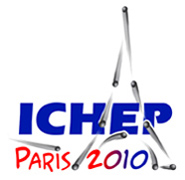Speaker
Prof.
Klaus The HERMES Collaboration
(University of Erlangen)
Description
Recent Results on Deeply Virtual Compton Scattering at HERMES
Deeply Virtual Compton Scattering is an elegant tool to investigate the angular momenta of partons inside the nucleon. Using longitudinally polarized electron and positron beams, HERMES has studied this process using various gaseous targets, in either unpolarized or longitudinal as well as transverse polarization states. This variety of experimental setups enable the extraction of a wealth of asymmetry amplitudes, which in turn are related to Generalized Parton Distributions (GPDs). This presentation will focus on the results obtained from a hydrogen and a deuterium target. In summary, the leading-twist asymmetry amplitudes are sizeable, while the suppressed higher twist contributions are compatible with zero.
HERMES measurements of azimuthal asymmetries related to transverse-momentum dependent quark distributions
The structure of the nucleon can be parametrised in terms of eight leading-twist quark distribution functions when including the transverse momentum of quarks in the description. They embody the correlations between the spin of the nucleon, the spin of the quarks and their longitudinal and transverse momentum. Only two of them, the momentum distribution f1q and the helicity distribution g1q can be measured in inclusive deep-inelastic lepton-nucleon scattering, all others can only be accessed in semi-inclusive measurements where in addition to the scattered lepton also a leading hadron is detected. Examples for such transverse-momentum dependent distribution functions are the 'transversity' distribution, the 'Sivers' and the 'Boer-Mulders' function. Each of these distributions causes distinctive signatures in the hadron’s azimuthal angular distribution around the direction of the exchanged virtual photon. The HERMES experiment at HERA has performed such measurements with polarized lepton beams of both helicities and unpolarized as well as longitudinally and transversely polarised targets and has determined the amplitudes of the azimuthal modulations for all leading-twist and several higher-twist contributions to the cross section. The results of these measurements will be reported.
Primary author
Prof.
Klaus The HERMES Collaboration
(University of Erlangen)




